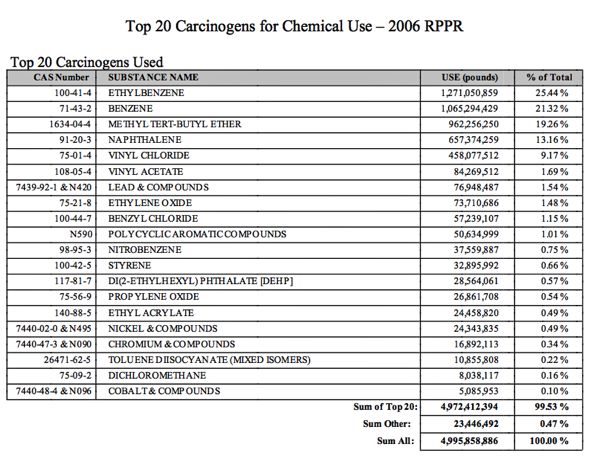DEP to Face Legislative Oversight on Sandy Today
Agenda Excludes Pre-Storm Planning & Preparedness, Global Warming, Adaptation, Coastal Management, & Land Use Rebuilding Issues
[Update 12/8/12 – WNYC covered this hearing – Critics: Christie Deep-Sixed Climate Change Prep
But it seems that DEP Commissioner Martin thinks he did “a heckof a job”!
New Jersey was well prepared for Sandy, said Martin, the DEP chief. “While unfortunately some lives were lost, by and large we protected the state, we protected thousands of lives and lots of homes and lots of property overall and again we’ve done a great job with that and the Governor provided great leadership overall.”
We obviously strongly disagree:
In his first year, Christie closed the Office of Climate Change and Energy which had been created and given top-level priority under Jon Corzine.
It was run by the Department of Environmental Protection (DEP). Its mission was to ready the state to handle more severe storms, heat and rising sea levels.
“So none of this work is getting done,” said Bill Wolfe, a 30-year-veteran of DEP and now a harsh critic.
“And if you want to get something done, the DEP has all the tools to get something done and they’ve chosen not to use those tools for political reasons, reflecting the Governor’s priorities and Governor’s policy,” Wolfe said. “And they just don’t want to own up to that.”
Robert Martin, Commissioner for the Department of Environmental Protection, defended the Christie Administration’s efforts. The DEP hasn’t been weakened, he said, it’s been streamlined to cut red tape and wasteful spending.
[Note – there is a slight lack of clarity in this story in terms of the DEP programs and organization. As we’ve written, Commissioner Bob Martin killed the Commissioner’s Office of Climate Change and Office of Policy and Planning; disbanded the Corzine “Climate Change Summit” adaptation work; and outsourced adaptation planning – in addition failing to update flood maps and ignoring a host of warnings, studies, and pilot project recommendations.] – end update.
The Senate Budget and Appropriations Committee holds its second in a series of oversight hearings on Supersorm Sandy today at the Meadowlands Ractrack at 11:30 am.
Let’s hope it is more substantive than the first one last week.
DEP Commissioner Martin is scheduled to testify on “DEP’s response to post-storm issues related to management of debris removal, wastewater, drinking water”.
Regardless of this narrow agenda, which excludes the most important issues, we’ve been looking into these issues and suggest – if the Senate is serious in its investigation – the following questions Martin should be asked to answer
I) Storm Planning, Preparedness & Adaptation
For what DEP knew, when they knew it, and what they could have done but failed to do to reduce risks, see these posts for info:
Leadership Matters – How DEP Buried Report on Coastal Storm Risks
Storm of Denial – Why Is Christie DEP Still in Denial and Lying About State Role in Coastal Hazards?
II) Public Involvement and transparency
Why is DEP holding private, closed door meetings on shore rebuilding? See: DEP Holds Private Shore Rebuilding Meetings – By Invitation Only
III) Rebuilding – Regional Planning, Infrastructure, and regulatory oversight
What is DEP’s role in rebuilding?
Why was rebuilding deregulated by Commsisioner Martin’s Order (for public infrastructure) which was later (on 11/19) radically expanded to private development by the Division of Land Use Management interpretation.
What is the State Planning Commission’s role?
What is the role of the Governor and the “Redevelopment Czar?
Would DEP support additional designations under the Coastal Barrier Resources Act?
See this for additional perspectives: Whether to Rebuild The Jersey Shore Is Now on the Table
IV) Reforms to Coastal Zone Management
see this: The Deafness Before the Storm
Christie Outsources Climate Change Adaptation Planning
Will changes in the “sewer rules” which added thousands of acres of land to new sewer service areas – invite more development and infrastructure into vulnerable areas, both coastal and inland?
V) Drinking Water
The Governor was forced to issue a water conservation emergency declaration and DEP isued at least a dozen boil water advisories because drinking water plants and intake pumps were knocked out by power failures and storm surge.
NJ’s water supply is highly vulnerable, give the locations of water supply intakes on inland rivers – as well as wells in the coastal zone, which are vulnerable to salt water intrusion.
And unknown number of water systems in the coast plain that rely on groundwater were impacted by salt water intrusion.
Under the NJ Water Supply management Act and DEP regulations, DEP is responsible for water supply infrastructure planning and emergency planning.
DEP has failed to update the Water Supply Master Plan – where’s the Plan?
What has DEP done to implement this regulatory requirement – where’s the Plan?:
7:10-2.3 Plan for the provision of potable water in emergencies
The Department shall prepare and maintain, within the Bureau of Safe Drinking Water, a plan for the provision of safe drinking water under emergency circumstances. The Department shall review and update such plan as necessary.
VI) Wastewater Treatment
DEP NJPDES permit regulations require sewage treatment plants to prepare a vulnerability assessment and emergency plan – but the regualtions have major loopholes and DEP does not enforce the requirement or review these plans.
Why?
What is DEP doing to close these loopholes?
Here are the requirements -What did Passaic Valley and Middlesex Plans say?
7:14A-6.12 OPERATION, MAINTENANCE, AND EMERGENCY CONDITIONS.
[…]3. The emergency plan shall be designed to ensure effective operation of the treatment works under emergency conditions, and shall consist, at a minimum, of the following elements:
Bi. i. A vulnerability analysis which shall estimate the degree to which the treatment works would be adversely affected by each type of emergency situation which could reasonably be expected to occur, including but not limited to those emergencies caused by natural disaster, civil disorder, strike, sabotage, faulty maintenance, negligent operation or accident; …
ii. The vulnerability analysis shall include, but is not limited to, an estimate of the effects of such an emergency upon the following:
(1) Power supply;
(2) Communication;
(3) Equipment;
(4) Supplies;
(5) Personnel;
(6) Security; and
(7) Emergency procedures to be followed.B. iii. An evaluation of the possible adverse effects on public health and the environment due to such an emergency; and
iv. An emergency operation plan for ensuring, to the maximum extent possible, uninterrupted treatment works operation and a manual of procedures for the implementation of such plan, including procedures for the notification of any appropriate regulatory agency, affected water supply purveyors, and any other municipal authority or agency. The plan and manual shall address each of the emergency situations described in the vulnerability analysis.
- The Department shall not individually review and approve an emergency plan as part of the permit issuance process. The Department’s decision not to review and approve an emergency plan shall not exempt a person from liability for violations arising from an emergency situation. A person shall take all necessary actions to mitigate the damage to the waters of the State arising from an emergency situation. Such actions shall not be limited by the emergency operating plan and the operation and maintenance manual.
VII) Impacts on Toxic Sites
Were any toxic sites imapcted by flood waters or storm surge?
Why is DEP not providing information to the public?
VIII) Climate Change
What is DEP doing to redouble efforts to reduce greenhouse gas emissions, promote renewables, and mandate adaptation planning?
Lets see if any of these tough questions get asked.




